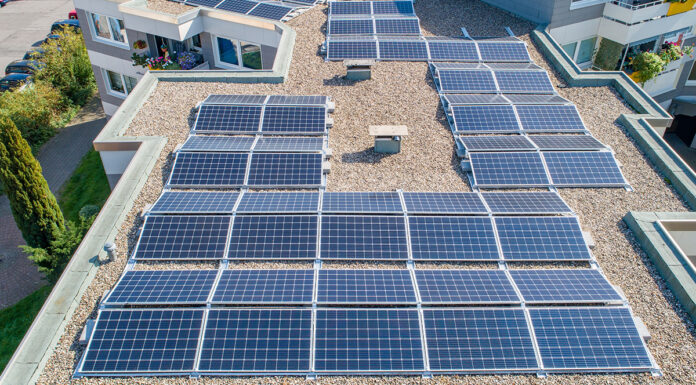Green technology, also known as clean technology or clean tech, is revolutionizing the way we approach environmental sustainability. In an era where environmental concerns are at the forefront, green technology information offers innovative solutions to mitigate the impact of human activities on our planet. This article aims to provide comprehensive insights into green technology, its various facets, and its role in shaping a more sustainable future.
Understanding Green Technology
Green technology information encompasses an array of technologies and practices designed to address environmental challenges. Its primary goal is to minimize the adverse effects of human activities on the environment, promote sustainability, and foster a greener and cleaner planet. From renewable energy sources to waste reduction techniques, green technology spans diverse sectors, each contributing to a more sustainable future.
Key Areas of Green Technology
1. Renewable Energy
Renewable energy technologies are at the forefront of green technology initiatives. These technologies harness naturally replenishing resources such as sunlight, wind, and water to generate clean energy. Solar power, wind turbines, hydroelectric power, and geothermal energy systems are prominent examples. Renewable energy not only reduces reliance on fossil fuels but also lowers greenhouse gas emissions, mitigating climate change.
2. Energy Efficiency
Improving energy efficiency is a vital aspect of green technology. Technologies aimed at reducing energy consumption in homes, businesses, and industries play a crucial role in sustainable development. Energy-efficient appliances, smart building systems, and advancements in industrial processes all contribute to a significant reduction in overall energy usage, ultimately leading to a more sustainable energy landscape.
3. Waste Management and Recycling
Efficient waste management and recycling technologies play a critical role in reducing the burden on landfills and minimizing pollution. Waste-to-energy technologies, composting, and recycling processes ensure that waste materials are repurposed, reducing the need for new raw materials and limiting environmental impact.
4. Water and Air Pollution Control
Technologies that focus on minimizing water and air pollution are fundamental to environmental sustainability. Advanced filtration systems, waste treatment plants, and air purification technologies work towards maintaining the quality of essential resources—water and air—crucial for the well-being of both ecosystems and humans.
5. Sustainable Transportation
Sustainable transportation technologies aim to reduce carbon emissions and dependence on non-renewable fuels. Electric vehicles (EVs), hydrogen fuel-cell vehicles, and efficient public transportation systems are integral components of sustainable transportation. These technologies contribute to cleaner air and reduced greenhouse gas emissions, helping combat climate change.
6. Agriculture and Food Sustainability
Green technology is transforming the agricultural sector, making it more sustainable and environmentally friendly. Precision farming, vertical farming, and advanced irrigation systems are among the technologies that optimize agrarian practices, minimizing waste, and conserving water and energy.
The Importance of Green Technology
Green technology information is instrumental in addressing the pressing environmental challenges facing the world today. Its significance can be highlighted through the following aspects:
1. Mitigating Climate Change
Green technology, especially renewable energy solutions, is pivotal in reducing greenhouse gas emissions. By replacing fossil fuel-based energy with clean and renewable sources, we can significantly mitigate climate change and its catastrophic effects on the environment.
2. Resource Conservation
By promoting recycling, efficient energy usage, and sustainable practices, green technology helps conserve valuable resources such as water, energy, and raw materials. This conservation is essential for the longevity of these resources and ensures their availability for future generations.
3. Economic Growth
Investing in green technology stimulates economic growth by creating new job opportunities and fostering innovation. As the demand for sustainable solutions increases, businesses and industries specializing in green technology flourish, contributing to economic development.
4. Environmental Protection
The primary objective of green technology is to protect the environment and preserve its natural resources. By adopting eco-friendly practices and utilizing sustainable technologies, we can safeguard ecosystems, biodiversity, and the overall health of the planet.
5. Health and Well-being
Reducing pollution and exposure to harmful substances through the implementation of green technology directly impacts public health. Cleaner air, water, and a healthier environment contribute to improved well-being and longevity.
The Future of Green Technology
The future of green technology is promising and exciting. Advancements in various sectors, driven by innovation and sustainability goals, will continue to shape the landscape of green technology. Key areas for future growth and development include:
1. Technological Advancements
Continued research and development will drive breakthroughs in green technology. Enhanced efficiency, affordability, and accessibility of clean energy sources will revolutionize the energy sector. Similarly, advancements in waste management, sustainable agriculture, and transportation will further contribute to a sustainable future.
2. Smart Technologies
The integration of smart technologies, such as artificial intelligence (AI) and the Internet of Things (IoT), will optimize energy consumption, waste management, and resource allocation. Smart grids, buildings, and intelligent transportation systems will enhance efficiency and reduce environmental impact.
3. Circular Economy
The transition towards a circular economy, where resources are reused and recycled, will be a central focus of future green technology. Waste reduction, product life extension, and responsible consumption will be at the forefront, minimizing the demand for new raw materials and lowering waste generation.
4. Policy and Regulation
Favorable governmental policies and regulations will continue to encourage the adoption of green technology. Incentives, subsidies, and mandates promoting renewable energy, energy efficiency, and sustainable practices will expedite the transition to a greener and more sustainable future.
Conclusion
Green technology is no longer an option but a necessity in our efforts to combat environmental challenges and secure a sustainable future. The innovative solutions it offers, spanning renewable energy, waste management, sustainable transportation, and more, are crucial in reducing our carbon footprint and ensuring a healthy planet for generations to come. As society becomes increasingly aware of the importance of sustainability, the role of green technology will only grow, making it a cornerstone of a cleaner, greener, and more sustainable world.










